Tom's Guide Verdict
The Vizio M-Series MQ6 is a decent 4K smart TV at a reasonable price, but those savings come with some compromises.
Pros
- +
Great color quality with quantum dot display
- +
Speedy response times and HDMI 2.1 connectivity make it a great gaming TV
- +
Supports Dolby Vision and HDR10+
- +
Voice control makes SmartCast better than ever
Cons
- -
Modest brightness and lackluster HDR performance
- -
60Hz panel doesn't support higher frame rate gaming on new consoles
- -
Mediocre sound
Why you can trust Tom's Guide
Price: $579
Model number: M55Q6-J01
Screen size: 55 inches
Resolution: 3840 x 2160
HDR: Dolby Vision, HDR10+, HDR10, and HLG
Refresh rate: 60 Hz
Ports: 3 HDMI 2.1; 1 USB
Audio: 10 watts x 2
Smart TV software: Vizio SmartCast
Size: 48.3 x 28.1 x 3.2 inches [w/o stand]
Weight: 29.4 pounds [w/o stand]
The Vizio M-Series MQ6 is a budget-friendly 4K smart TV that drives home how much value you can get for your money when you aren't paying for some of the premium features that are so prominent in the best TVs we review. By embracing technologies like QLED and voice control, the M-Series delivers decent performance for the whole family to enjoy, but skips out on the giant app selections and more technical smart features that pricier competitors might offer.
But the M-Series also demonstrates some of the limitations that come with a low price, missing things like local dimming and extra ports that are easily found on TVs that don't cost a lot more. Our Vizio M-Series M55Q6-J01 review makes it clear that the MQ6 is a good TV at a decent price — it's on our list of the best Vizio TVs — but shows how budget shoppers often need to be ready to make some trade offs in the name of price.
Editor's Note: Since this review was written, Vizio TVs have been updated with support for HBO Max. We've updated the language in this review to reflect this change, but the general recommendations and rating of the review are unchanged since it was initially published in July 2021.
Vizio M-Series MQ6 review: Pricing and availability
At the time of this writing the Vizio M-Series MQ6 is only being sold in two sizes, the 55-inch model reviewed here and a 65-inch version. However, within the coming weeks Vizio will launch additional sizes, ranging from as small as 43 inches up to a giant 75-inch screen size. Finally, a 70-inch model is also slated for this summer, but won't hit stores until August.
The Vizio M-Series consists of two separate model lines, the MQ6 highlighted in this review, and a more expensive MQ7 model. Both are 4K smart TVs that offer quantum-dot displays and Vizio SmartCast smart TV functions, complete with the new voice search capabilities.
Though the overall design looks similar, the two models have some important distinguishing features. Namely, the more premium MQ7 boasts dimmable backlighting zones and advanced motion processing that aren't available for the MQ6, not to mention an extra HDMI port.
As a result of these differences, our recommendations only apply to the MQ6 models in the Vizio M-Series, not the MQ7 models. We'll review the MQ7 separately to provide a closer look at that smart TV's features and capabilities.
Get instant access to breaking news, the hottest reviews, great deals and helpful tips.
Vizio M-Series MQ6 review: Design
The Vizio M-Series M55Q6-J01 is new for 2021, and Vizio has updated the TV in several respects, including a few slight refinements to the physical design. The entire TV has a sleek (if not svelte) look, with tapered edges all around, and some unexpected curvilinear stylings on the back of the chassis, all done in standard black plastic.
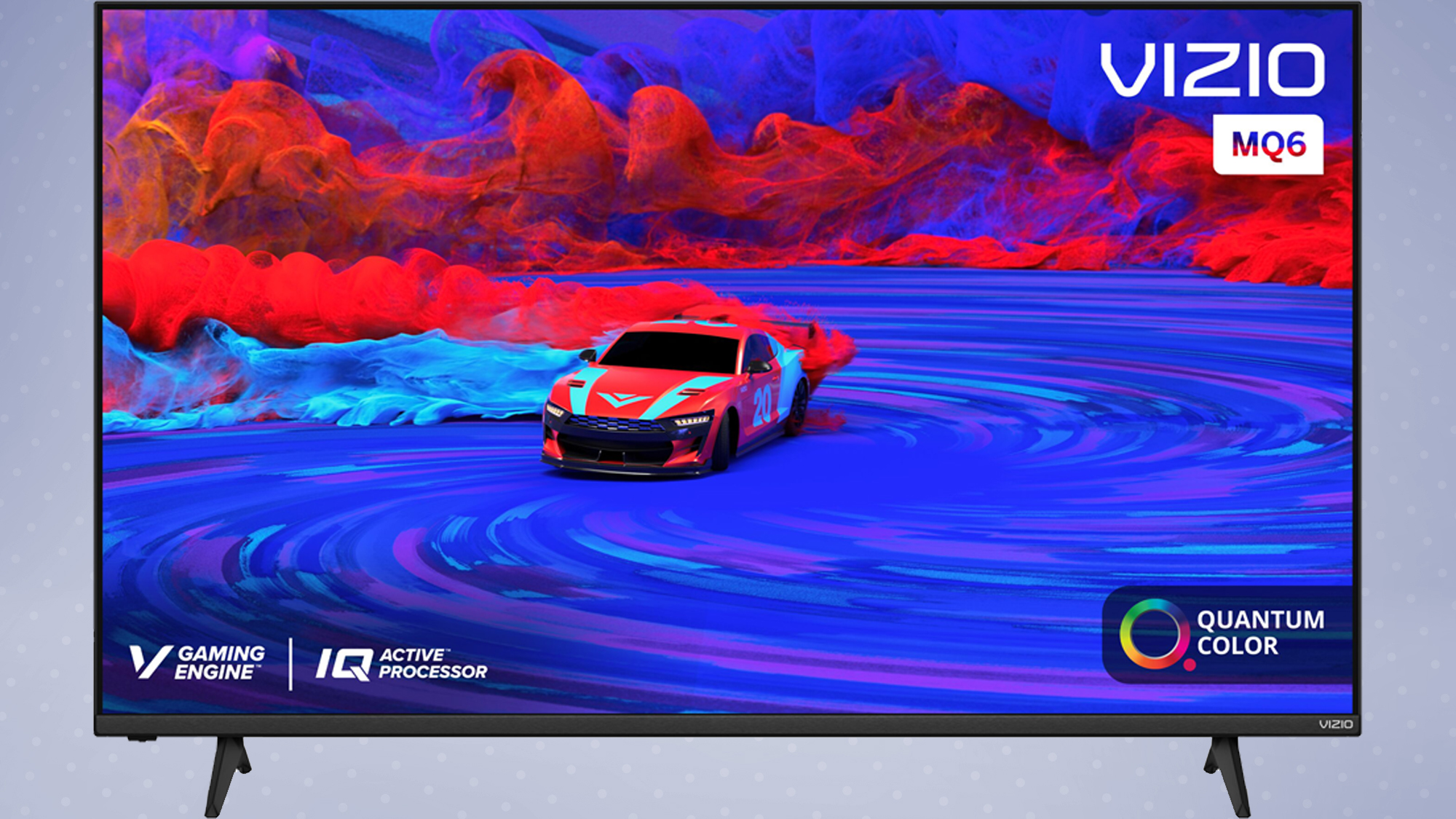
The stand is a pair of feet that attach on either end of the TV, and set up is relatively simple without any complicated assembly or involved software setup. With the 55-inch model measuring 48.3 x 28.1 x 3.2 inches and weighing 29.4 pounds before attaching the stand, it's possible to set up the MQ6 with one person, but we'd still recommend getting a hand with it.
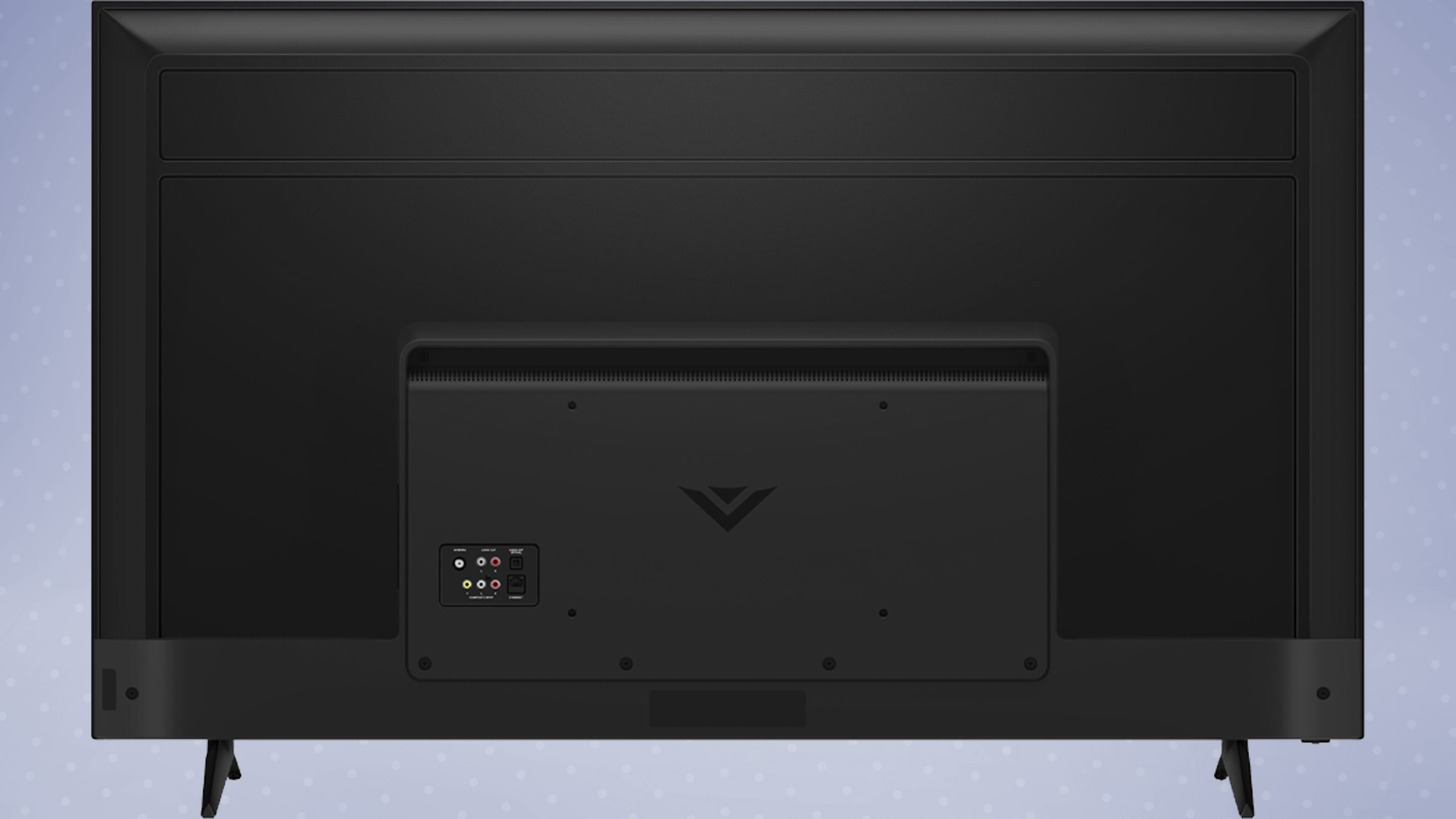
If you don't want to use the included feet for tabletop use, the MQ6 is also wall mountable, using a 300 x 200 millimeter mount. (Check out the best TV mounts for some of our favorite wall mounting hardware.)
Vizio M-Series MQ6 review: Ports
On the back of the MQ6 you'll find the connector panel, which has a smaller selection of ports than we'd like. The TV has only three HDMI ports, but all three are HDMI 2.1, with one offering eARC for connecting a soundbar or speaker set. Even better, the audio output supports uncompressed Dolby Atmos sound, so pairing the TV with an Atmos-ready soundbar will offer a huge upgrade to the quality and realism the TV can offer.
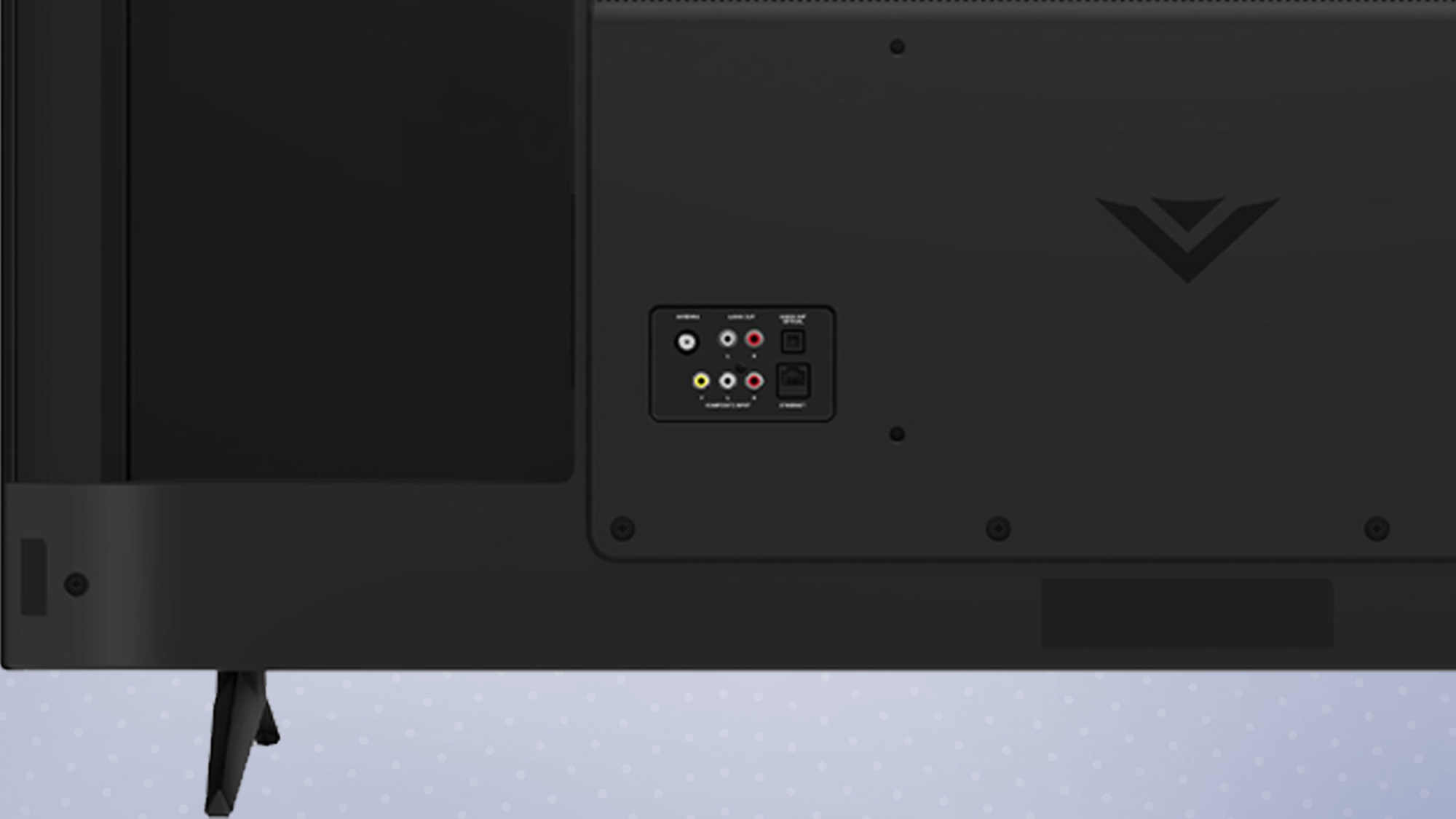
There's a single USB port, composite video input and a coaxial connection for antenna or cable. The set also has digital audio output for older sound systems and an Ethernet port for wired connectivity. And you may want to use it, since the TV itself is equipped with 802.11n Wi-Fi rather than the more current 802.11AC or the newer Wi-Fi 6. That Wi-Fi standard is sufficient for most streaming uses, but you might notice slower performance when streaming 4K video. It's odd to see a modern 4K smart TV opt for an older, slower wireless standard.
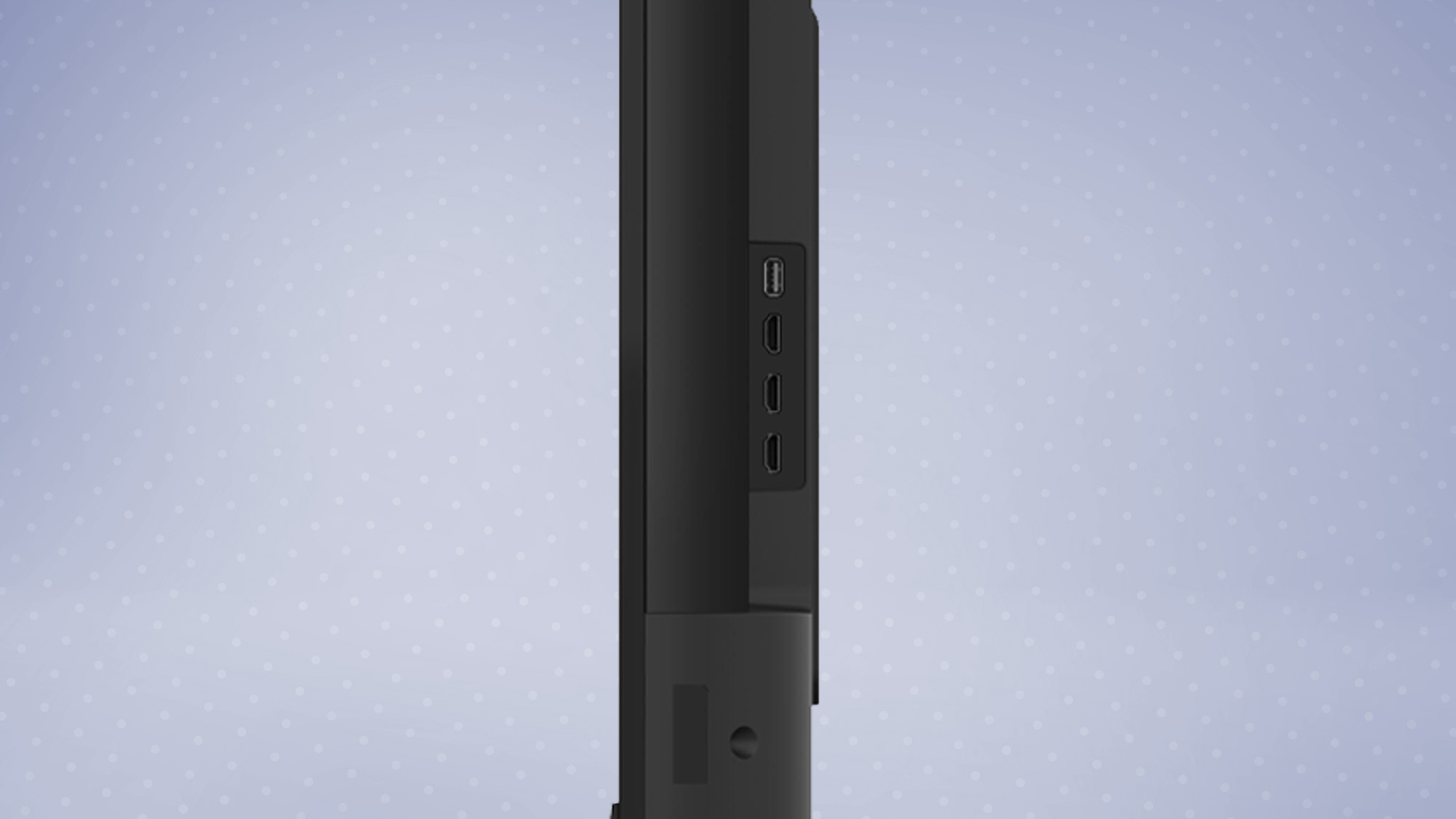
Aside from the Wi-Fi, the TV is also outfitted with Bluetooth 5LE, which will let you wirelessly connect headphones or speakers, and also handles connection to the voice-enabled remote control.
Vizio M-Series MQ6 review: Performance
The Vizio MQ6 boasts a 4K panel with quantum dots for better color and a 60Hz refresh rate, all in line with what we consider to be the better end of affordable TVs.
The set uses full array backlight but none of the local dimming control that you would see on competitors like the TCL 5-Series Roku TV (S535). While that's a common cost-cutting move by manufacturers on TVs in this price range, it means that overall contrast won't be as impressive, and high dynamic range (HDR) performance is muted considerably.
That's a bit of a double-edged sword, because it means that black darker images may come out looking a bit more grey, thanks to the backlight, it also means that you get fewer of the distinct halos around bright on-screen objects that so many high-end sets struggle to eliminate. But the HDR limitations are especially disappointing on the Vizio M-Series, since it's one of the few TVs on the market to offer support for both Dolby Vision and HDR10+ formats.
That said, watching movies and video samples on the MQ6 did let us quickly see what the TV did well, and the few areas where it needs to improve. Despite the undifferentiated backlight, the Vizio made things look good in the opening scenes of Blade Runner 2049, with crisp detail, even in shadowy scenes. As Ryan Gosling and Dave Bautista squared off in the cramped confines of a dimly-lit farmhouse, the dark shadows weren't quite as dark as we've seen on other sets, and the bright highlights of light through the windows or glowing elements on K's eye-scanner weren't quite as vivid as we've seen on the competition.
And it's not to say that the contrast is bad or that HDR is entirely absent. Watching the opera scene in Tenet, the black on black of special ops soldiers' uniforms could easily have turned into an ambiguous black blob, losing the details of object edges and clothing seams, but everything seemed pretty clear. And you still saw some benefit from HDR support, with the glow of highlights like windows and lighting offered decent brightness that stood out in the scene.
The Vizio had far better performance with color, thankfully. When watching 4K samples of nature footage, both the color and detail looked very good. A bright green tree frog looked vibrantly verdant, and a pink-hued tree snake looked surprisingly realistic. Whether it was the tiny textures on the back of a spider or the scales on a snake, the 4K resolution delivered all of the detail you would expect. Colors did looka little oversaturated when displaying yellows and greens, but not glaringly so.
A sunset scene gave the TV an excellent test of its color reproduction and it passed with flying colors. Brilliant pastels and bright hues looked just as gorgeous as a tropical sunset should look, and the subtle color transitions that we would expect to see some mild banding in came through reasonably well, without the harsh posterization that is sometimes seen on less expensive models.
The TV's full array direct backlighting was consistent, with none of the shadows at the edges of the panel that we expected to encounter, and no variance when showing broad blocks of color like a blue sky.
The MQ6 also has decent viewing angles, though there is some perceptible color shifting once you're out at a 45-degree angle. But this isn't drastic color shifting, merely a subtle shift in tone when seen from too steep an angle.
Vizio M-Series MQ6 review: Test results
Our lab testing highlighted how well the MQ6 did in terms of raw performance, offering excellent color and accuracy, but without the brightness we're used to seeing from QLED displays.
Color gamut was very good, thanks to the use of quantum dot enhancement. The Vizio reproduced 99.96% of the Rec 709 color space, putting it right up in the almost-100% range we expect from a good TV. That's a hair better than the Hisense U8G Android TV (99.95), while giving the MQ6 a solid lead over both the TCL 5-Series Roku TV (99.85) and last year's Samsung Q60T QLED TV (99.72). You can find TVs that will actually exceed the Rec 709 specification with higher than 100%, but those are exclusively OLED models with much higher prices.
Color accuracy was also excellent, with the MQ6 scoring a Delta-E average of 1.47 (lower scores are better) in calibrated dark mode. We used to consider anything that scored lower than 2.0 to be excellent, but recent scores show improving accuracy across the industry, so 2.0 is sort of a low bar to clear. Nonetheless, that makes the MQ6 a hair more accurate than both the TCL 5-Series (1.76) and the Hisense U8G (1.57), and noticeably better than the Samsung Q60T (2.7).
One area where we expected the Vizio to do better was brightness. Even with the addition of brightness boosting quantum dots, the M-Series MQ6 registered a top brightness of 299.6 nits. While 300 nits isn't terrible for a budget-friendly TV, it's not a great showing compared to all of the other QLED competitors out there, like the TCL 5-Series (391.9), the Hisense U8G (722.7) and even last year's Samsung Q60T (414.8501).
Vizio M-Series MQ6 review: Gaming
When we tested the MQ6 with our Leo Bodnar lag tester, the TV registered a pretty speedy response time of 13.7 milliseconds, one of the best times in recent testing. Where anything under 20 milliseconds is considered adequate for gaming, the shorter lag time offered by the MQ6 makes it an especially good gaming TV, but the TV's lack of local dimming and 60Hz refresh rate mean that some of the best features of modern gaming are out of reach.
The biggest limitations come from the display itself. Without local dimming, the HDR performance is lackluster, and that will be true in gaming as well, even as HDR becomes more prominent in current games. The bigger issue is the refresh rate of the set, which has a 60 Hz panel. If you're using a newer console like the Xbox Series X or the PS5, that means you won't be able to enjoy the potential 120 Hz refresh rates that current generation hardware supports. But for most games, and for pretty much all older consoles, that 60 Hz refresh rate will be fine.
The TV also uses what Vizio calls V-Gaming Engine, an umbrella term for gaming features like AMD freesync, variable refresh rates, and auto game mode, which is Vizio's term for auto low latency mode. With VRR and a LLM features that are built into HDMI 2.1, it's not anything unusual, but having that support and the necessary connectivity is still important to have.
One unexpected quirk we ran into during testing was that the default automatic HDMI setting failed to register our Xbox connecting over HDMI 2.1, despite using the appropriate cable and the Vizio having full HDMI 2.1 on all three of its ports. Until we went into the settings and manually enabled HDMI 2.1, the TV failed to even recognize the Xbox Series X as a 4K-capable device. Once this setting adjustment was made, however, the TV supported 4K gaming at up to 60Hz, with 10-bit color and full HDR support.
Vizio M-Series MQ6 review: Audio
One area where corners get cut on even premium TVs is the audio system. It's expensive and difficult to produce great sound from the narrow confines of modern TVs, so we can be pretty forgiving of TV audio at times. But we were still a little disappointed by the M-Series, with its pair of 10-watt speakers.
That's not a lot of power, and the volume the TV provides might be fine for hearing dialogue in TV shows, but it won't give you any low-end and won't fully deliver the rich sound effects and audioscapes that modern movies offer. We would definitely suggest picking up one of the best soundbars to go with this TV, and it would be worth paying a little extra to get one with Dolby Atmos.
Vizio M-Series MQ6 review: Smart Features
One area where the M-Series MQ6 is significantly improved over past Vizio TVs is the smart TV functions. Vizio's SmartCast doesn't have the same ecosystem of apps you'd get on an Android or Roku-powered smart TV, but the Vizio's 77 apps offer a lot more than past Vizio sets did, including Netflix, Amazon Prime Video, Hulu, Apple TV, Disney Plus, YouTube and YouTube TV, Peacock, Tubi and Crackle. Vizio's WatchFree service gives you plenty of free content to browse as soon as you turn on the TV, and it seems to have most of the bases covered for popular streaming apps.
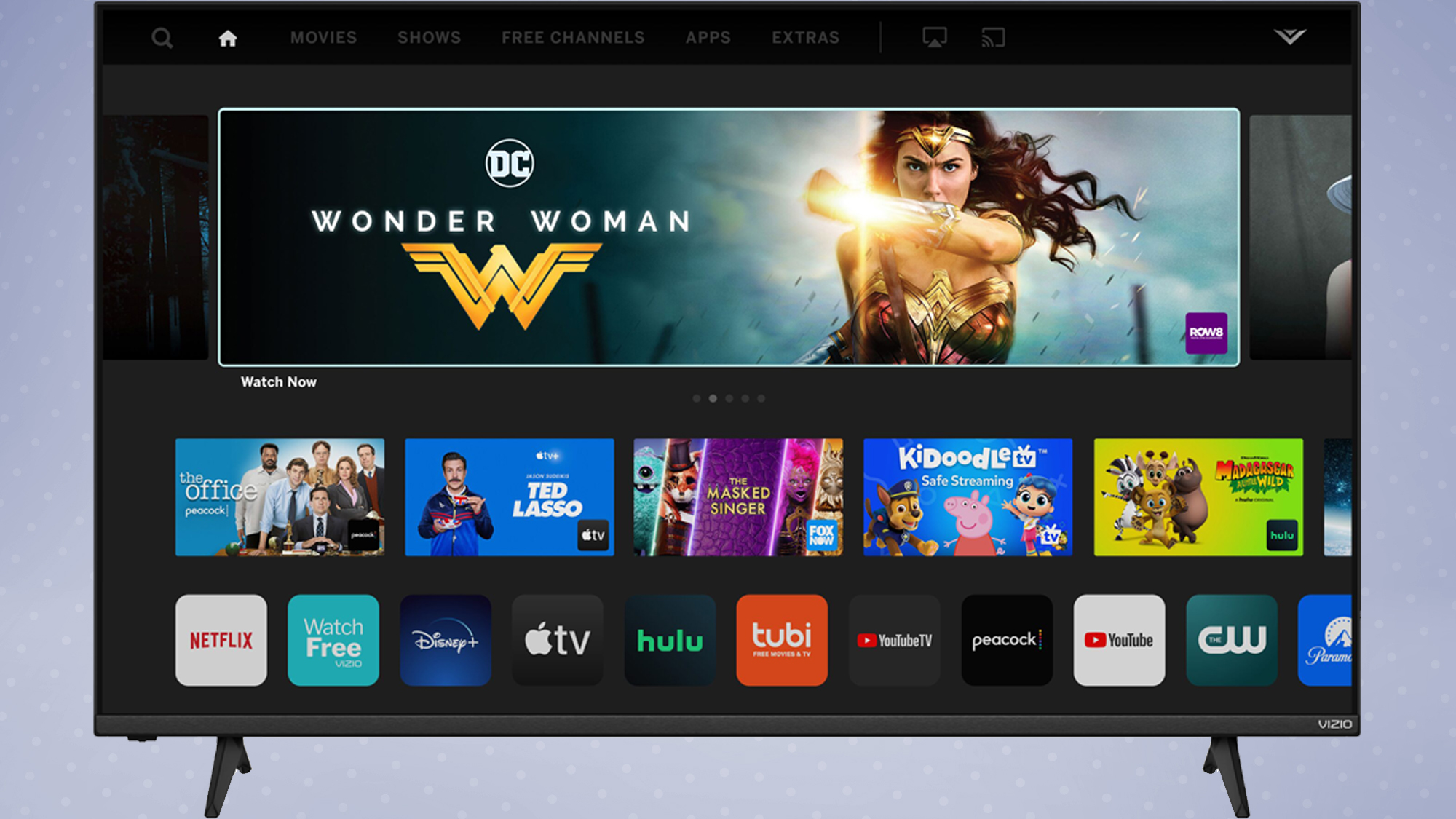
Not every popular app can be installed on the TV, but that doesn't mean you can't enjoy the service on the TV. The Vizio has both Google Cast and Apple Airplay 2 built in, so it's easy to fill in any gaps in app selection by casting your favorite content and apps to the TV from your phone or tablet.
But the biggest improvement to the SmartCast platform is the addition of voice control through the mic-equipped remote. The voice feature lets you search for content and control simple features like volume and input selection with voice commands — it's quite similar to what you'd get on a Roku TV. You may not be able to call up sports stats or check the weather with voice search, but it's enough to make navigating to your favorite shows easier than it's ever been.
The voice feature isn't perfect though. When the TV registers voice input, it displays text on screen to show you what the TV heard – a handy touch that helps eliminate confusion when it mishears tricky words – but the way the text is displayed overlaps with other text on the home screen menu, making things difficult to read at times. That's a small issue, and one that will likely be cleared up with an automatic software update, but it's still an irritant in an otherwise welcome new feature.
Vizio M-Series MQ6 review: Remote control
With the move to include voice interaction comes a redesigned remote control that adds a built-in microphone and Bluetooth connectivity rather than the IR-based remotes of years past. The new Vizio Voice remote is a simple rectangular black plastic wand with a prominent circular navigation pad. Power, Input, Home, Settings are at the top, while a volume rocker, mute button, and microphone button sit below the navigation pad. It's a far more minimalist look than past Vizio designs, ditching the number buttons and switching away from the distinctive oval-shaped profile for last year's model.

Just above the navigation pad is a cluster of dedicated app buttons. That's not a huge surprise, since we've seen the same thing from every other TV manufacturer. But where most TV makers have four app buttons, Vizio has six. On our remote were buttons for Amazon Prime Video, Crackle, Disney Plus, Netflix, Peacock, Tubi, and Vizio’s own WatchFree free streaming TV aggregation app.
Given that apps like Netflix, Disney Plus and and Amazon Prime are included as something of a paid placement as much as providing a convenience to users, I was surprised to see buttons for free services like Crackle and Tubi. Whether the inclusion of these apps is also part of a paid deal or a way to highlight some of the free content options Vizio heavily promotes isn't clear, but it's the only remote I've seen to offer these services in the app buttons on the remote. If you're a big fan of free shows and movies, that's something of a plus.
Vizio M-Series MQ6 review: Verdict
Budget-friendly TVs always walk a line between providing all of the capability users want and trimming superfluous features to keep costs down. Vizio's TVs have gotten better at this balancing act in recent years, but the Vizio M-Series MQ6 shows how precarious a balance it is, with great additions, like voice control and broader HDR format support on the positive side and blunted brightness and contrast performance on the other. All in all, the Vizio M-Series MQ6 offers a decent amount of capability for budget shoppers, but it has some real limitations if you're looking for more advanced gaming features or a deep bench of smart capabilities.
That said, the M-Series MQ6 delivers most of what is most important in a TV – great color reproduction and picture quality, a good app selection, and enough smarts to satisfy TV shoppers that aren't picky about their smart TVs. For a competing set with similar features and price, the TCL 5-Series Roku TV S535 is a slightly better option, thanks to larger port selection and superior HDR performance, but it's a close match. If you have access to the Vizio but not the TCL, it's still a safe buy, and gives a solid 4K smart TV that will fit within all but the tightest budgets.
Brian Westover is currently Lead Analyst, PCs and Hardware at PCMag. Until recently, however, he was Senior Editor at Tom's Guide, where he led the site's TV coverage for several years, reviewing scores of sets and writing about everything from 8K to HDR to HDMI 2.1. He also put his computing knowledge to good use by reviewing many PCs and Mac devices, and also led our router and home networking coverage. Prior to joining Tom's Guide, he wrote for TopTenReviews and PCMag.


